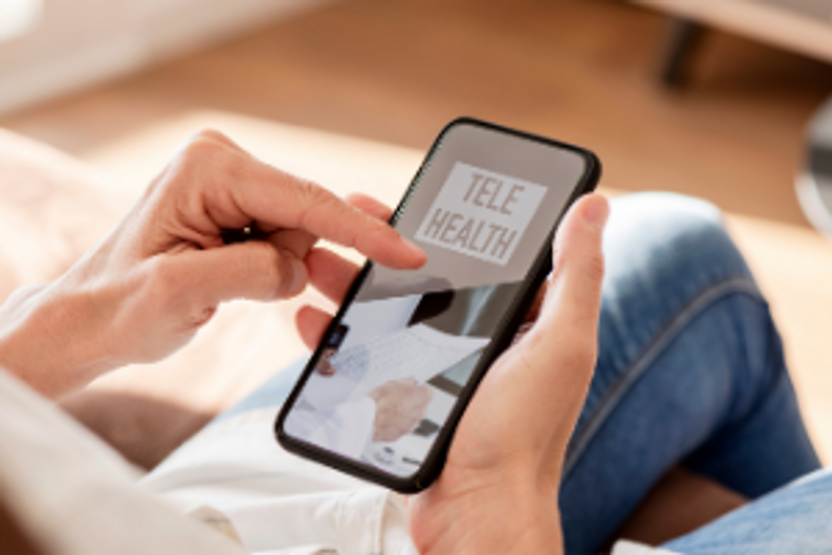10 Telehealth Myths: What’s Been Debunked?
Posted by amess on Jan 14th 2021
One major thing that was elevated because of the pandemic was telehealth. Because many practices closed or were limited to emergency cases, the majority of healthcare entities adopted this modern-aged method of medicine in some form to continue delivering patient care. Though many did grow accustomed to the new technology, there were many rumors swirling even prior to the shutdown. However, many of the assumptions are incorrect.
Patients don’t want to use telehealth outside of the medical industry.
It’s understandable how this rumor became popular, but a study from 2019 reported that around 70% of people are interested in virtual eye care visits with that number increasing since the outbreak of COVID-19.
The older generation isn’t comfortable with telehealth.

On the contrary, several studies report that those over 65 believe that telehealth delivers faster, more convenient care. In fact, the 2019 Senior Consumer Study found that 25 million Americans 65+ want to use telehealth but don’t have the option. Seniors reportedly say that telehealth would:
- Save time
- Save money
- Help them gain better access to providers
Telehealth isn’t secure.
This is a valid concern, but at this point, all reliable telehealth platforms comply with HIPAA guidelines and have top-level security protocols in place. To help you, your staff, and your patients feel more comfortable with the software, have your provider walk you through the security in place.
Policies and regulations are too strict.
Prior to the coronavirus outbreak, legislation was turning to become more favorable to remote healthcare. After the outbreak, there was a need for even more relaxed regulations and expanded payment policies. These changes help to demonstrate the importance of telehealth, but only time will tell if we continue along this legislative path.
Telehealth is too expensive.
While the initial investment in a telehealth platform might seem intimidating, the Geisinger Health Plan study found that telemedicine saved providers about $216 per patient per month between 2008 and 2012.

Virtual visits weaken the rapport.
Although this is a valid concern, it may not hold much water. One study found that 67% of patients said that using telemedicine would actually increase their satisfaction with medical care. Additionally, telehealth helps:
- Increase the call for eye contact and undivided attention
- Provide a “barrier,” allowing the patient to feel more comfortable being honest
- Practitioners see patients on a more regular basis with little inconvenience
It’s difficult to complete a thorough exam and give an accurate diagnosis without seeing the patient.
This is probably the most common argument for resisting telemedicine. However, the statistics just don’t verify this concern. For example, the Veterans Health Administration noted that hospital post-heart attack readmissions decreased by an average of 47.5% between heart failure and other illnesses after they introduced telemedicine visits to their patients. Another study of 8,000 patients found that there was virtually no difference between telehealth and in-person appointments.
There’s a higher risk of malpractice suits.
This is inaccurate; telehealth actually decreases the risk of malpractice suits because of the ability for more accurate record-keeping and simplified follow-up.
Telehealth is a rural solution.
Yes, telehealth is a wonderful tool to reach those patients that are in extremely remote and rural areas. However, there are plenty of scenarios where urban dwellers are just as removed from care, including mental illness, physical disability, post-operation, or another unrelated illness has kept them at home like the flu.
Another consideration is the time it takes urbanites to get to and from their appointments. Traffic is typically worse in urban districts, leading to slow transport and long wait times, and sometimes conflicts arise. To save everyone the time and headache, try telehealth for:

- Prescription refills
- Referrals
- Test results
- Notes for missing work or school
- Care reviews – how is the current protocol working for the patient?
Telehealth is only for urgent care purposes.
Finally, nearly three-quarters of all doctor visits could be handled over the phone or video. As mentioned above, your patients would be thrilled if you could save them time and effort by changing an in-practice visit for a prescription refill to a telehealth call.
Download the eBook to get all the information (and corrected misinformation) on telehealth.
EyePromise In Telehealth
We agree with experts who say that the current pandemic has unearthed the value and convenience of telehealth. However, EyePromise has been sharing its “telehealth service” for years, and it comes at no extra cost to you or your patients. The EyePromise Auto Refill Program (ARP) is an auto-delivery program for EyePromise nutraceuticals. Here’s the gist of the program:
- You recommend one of EyePromise’s science-based nutraceuticals that meets your patient’s unique eye health needs.
- This recommendation is relayed to your front desk person, and he/she opens your practice’s EyePromise eCommerce page, which is created and managed by EyePromise. All you need to do is bookmark the link.
- The patient shares their payment and shipping information to complete the eCommerce submission. They receive a free bottle in their first order, discounts on every future bottle ordered, and free shipping on every box.
- Done!
From there, EyePromise manages the shipping and handling and delivers the nutraceuticals you recommend directly to the patient. If there are any concerns with the shipment or product, the patient can reach out to EyePromise, and we’ll handle everything. It’s a $0 investment for your practice, and your patients are receiving nutrients that are good for their eye and overall health.


